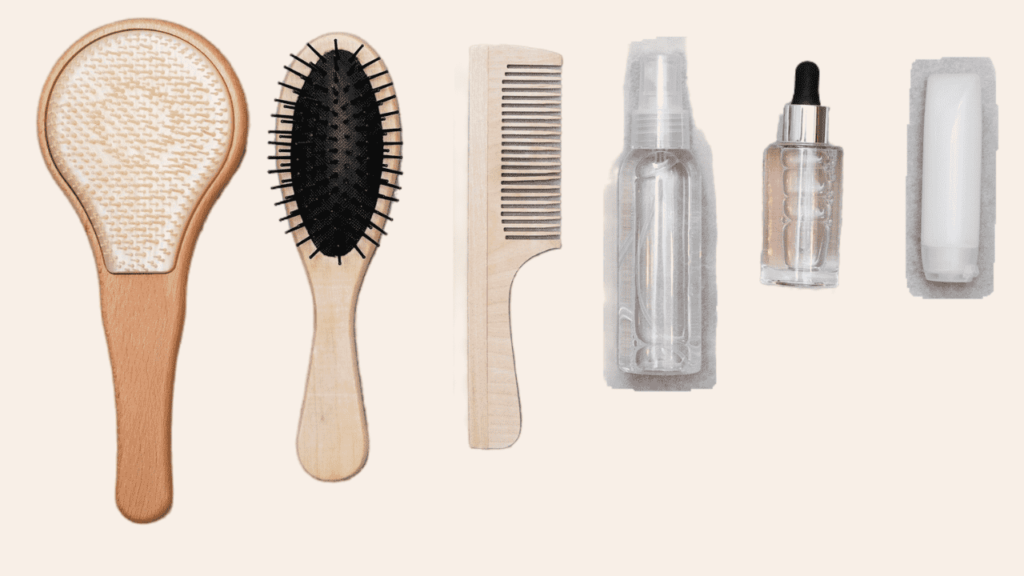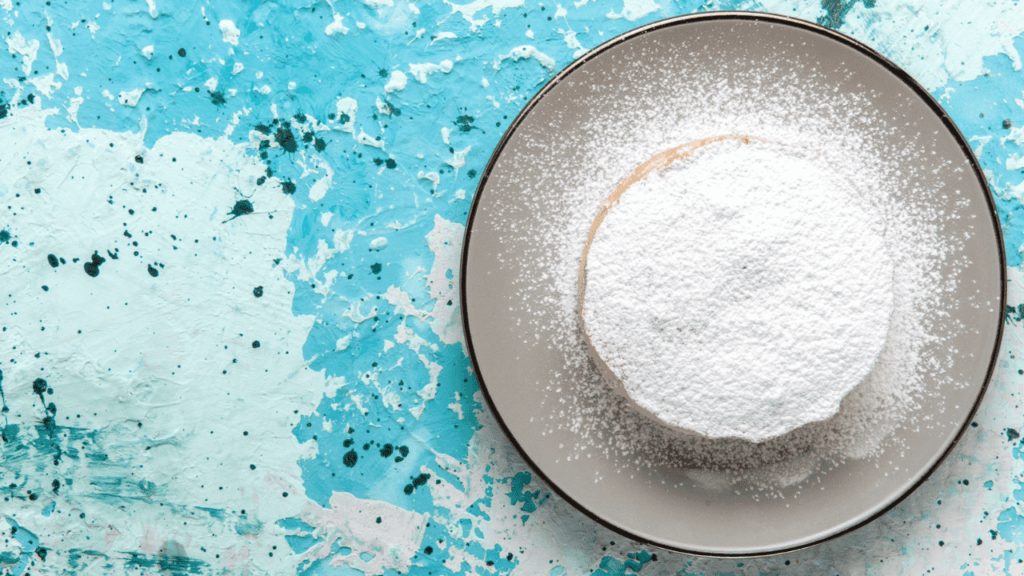Cleaning your hair brushes regularly is crucial to eliminate debris, residue, and scalp oils that get stuck in the bristles. Over time, dirty hairbrushes can accumulate harmful bacteria, as found in a study by Arizona University. An average hairbrush can harbor thousands of bacterial colonies. This buildup of dead skin cells, dust, and product creates a perfect breeding ground for bacteria to flourish. In this blog, I’ll delve into the best practices for cleaning your brushes and combs effectively.
Start by soaking your hairbrushes in a mixture of vinegar and baking soda to break down the accumulated gunk. Use an old toothbrush to scrub the bristles gently, focusing on eliminating any residue and oils. It might feel gross at first, especially if you’ve ignored this task for months or years, but the results are worth it. This step-by-step guide will keep your brushes and combs clean, ensuring they don’t bring harm to your hair.
Why Should You Clean Your Hairbrushes?

Cleaning your hairbrush is a key component of your daily routine. Accumulation of hair and natural oils from styling products can build up on the bristles, leading to a greasy and lacklustre appearance. This combination of products, dead skin cells, and dirt creates a perfect environment for bacteria to grow, potentially causing scalp infections. Regularly cleaning your brushes is essential. For the least maintenance, a wide toothcomb can be the best solution to avoid product transfer to your hair.
What Are the Benefits of Baking Soda and Vinegar As Cleansers?
Baking Soda

- Baking soda is readily available and environmentally friendly.
- It is less toxic and an organic compound.
- Helps eliminate foul or residual odor from tubs and sinks.
- Use it as a disinfectant for scrubbing your brush bristles without harm.
- Neutralizes bacteria, sweat, and scalp odors.
- Baking soda disintegrates proteins and removes food stains quickly.
- Acts as a natural cleanser, making bristles soft and fluffy.
Tools and Materials Needed
- Clean hairbrushes at home
- Toothbrush or small cleaning brush
- Mild shampoo or dish soap
- Shallow bowl or sink with a plug
- Towel
Step-by-Step Instructions to Clean Hairbrushes With Baking Soda and Vinegar
There are six steps to need clean your hairbrushes:
Step 1: Remove Hair
Using a comb, or fingers, remove any hair caught in the bristles.
Step 2: Prepare Your Solution
Add a couple of drops of mild shampoo or dish soap into a shallow bowl or sink of warm water. Mix until foamy.
Step 3: Soak the Brush
Leave the brush in warm soapy water for ten minutes to loosen any oil, product, or dirt.
Step 4: Scrub the Bristles
Using an old toothbrush or small cleaning brush, gently clean the bristles, giving special attention to areas with more product buildup.
Step 5: Rinse Thoroughly
Rinse the brush under warm, running water until all the soap buildup is removed. Ensure no residue is left over.
Step 6: Dry the Brush
Shake off any excess water and place the brush to air dry on a clean towel. Don’t use until it’s completely dry to prevent mould from forming.
How Often Should You Clean Your Hairbrushes?
Clean your hairbrushes based on how frequently you use them. The general rule of thumb is to clean them weekly if using daily to prevent dead skin cells and product buildup on the bristles. For those oiling wavy hair or using brushes less frequently, once a month is sufficient.
Will Cleaning Combs and Hairbrushes With Vinegar and Baking Soda Damage Them?
Vinegar and baking soda won’t damage combs or hairbrushes. They work as disinfectant and cleansing agents. Hairbrushes can attract hair, bacteria, and fungi. Not cleaning your brushes can result in itching, dandruff, and inflammation. Microorganisms get transferred repeatedly, leading to folliculitis and seborrheic dermatitis, which compromises scalp health.
When Should You Replace Your Hairbrush?
Replace your hairbrush if the bristles or handles are damaged or bent. If cleaning doesn’t get rid of build-up, it’s time for a new one. Remember, the benefits of steaming hair include better scalp health and more manageable hair.
Cleaning Hairbrushes: Additional Tips
Sanitising
- Deeply clean and sanitise your tools to maintain a healthy cleaning routine.
- Use apple cider vinegar (ACV) and sodium bicarbonate for anti-fungal and antibacterial properties.
- Soak plastic or metal combs and brushes in warm water with a cup of ACV and a tsp of baking soda in a washing bowl.
- For natural or combination bristles, try the swirl method. Swirl a bristle brush in water with ACV for a few minutes to eliminate bacteria.
- Rinse, shake, and dry on a towel to remove excess water. Let the brush rest face down.
- Naturalistas with natural hair and curly hair can add black sesame seeds to their regimen for added benefits.
- Avoid soaking wood or rubber cushion brushes, just massage the bristles to clarify and use a drop of essential oil for a better smell.
CLEAN & FRESH
There are different ways to go about cleaning your hair tools. For best results, differentiate between plastic, metal, wood, and natural materials. You can cleanse them using the same solution or by soaking them. Try mixing shampoo, sodium bicarbonate, ACV, and soap. Using antibacterial soap is also effective. It’s important to clean your brushes and combs regularly. This will make your tools last longer, keep them clean, and fresh, and maintain their natural ingredients. Clean them once a week or once a month to care for your tools and feel better. This routine is doable and helps prevent nasty things from growing on your pretty head. You’ll notice a significant difference in how your tools look and how you feel. Commit to this habit to ensure your hair tools stay in the best condition.
Conclusion
Cleaning your hair brushes regularly with vinegar and baking soda is essential for maintaining hygiene and scalp health. These natural cleansers help eliminate debris, residue, and scalp oils from the bristles, preventing bacteria buildup. By following a simple routine of soaking and scrubbing, you can keep your brushes clean and fresh, ensuring they don’t transfer dirt back to your hair. For best results, remember to differentiate between plastic, metal, wood, and other natural materials.
FAQ’s
How Do You Remove Product Buildup from a Hairbrush?
Remove hair and product buildup with your fingers, a pintail comb, or tweezers. Fill a large bowl with lukewarm water and soak the brush bristles down. After two minutes, add baking soda and gently scrub to ensure all product buildup is taken off.
What is the Best Solution for Cleaning Hair Brushes?
Mix equal parts of isopropyl alcohol and water. Dip the brush in the solution. Place it on a towel with bristles facing down to air dry.
How to Clean Hair Brushes with Baking Soda and Shampoo Naturally?
How to clean a hair brush? Use a toothpick to remove hair. Add shampoo and baking soda to a container of warm water. Swish around and let soak for 15 minutes.
How Do I Get the White Stuff Off My Hairbrush?
Reach for shampoo. Clean the hair out of the bristles. Wash the brush with a drop of shampoo and warm water. This will remove product buildup, dirt, and oils from your hairbrush.

